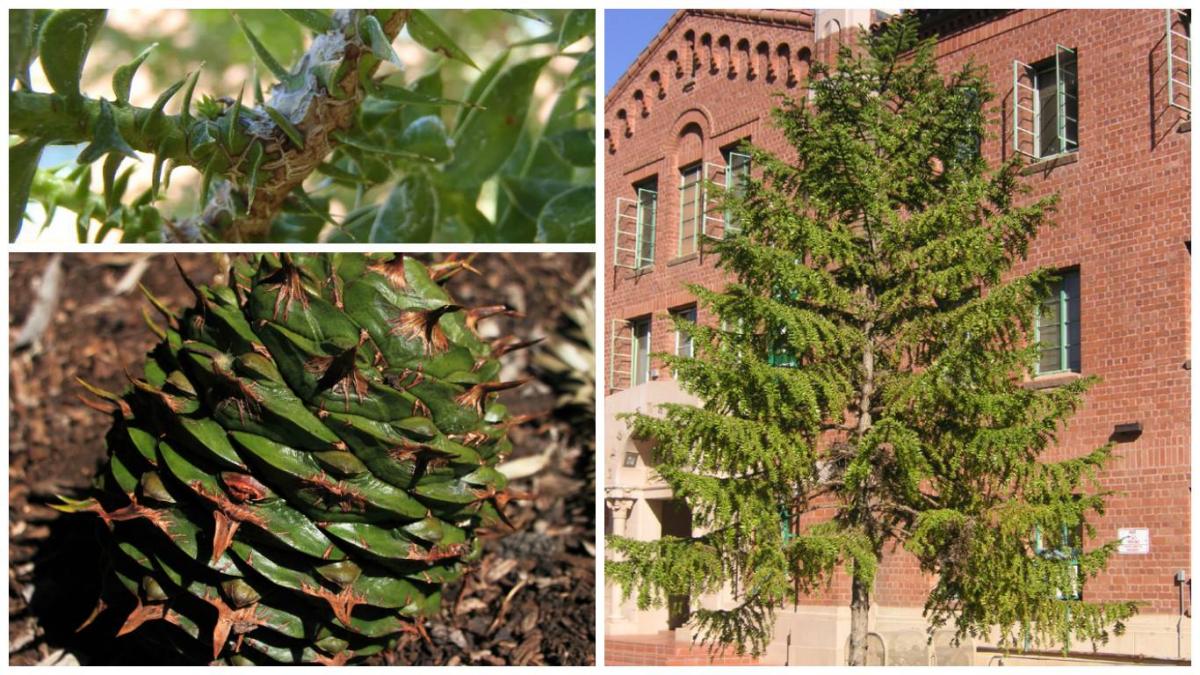
The Araucaria bidwillii is commonly known as the bunya-bunya tree. Its name is derived from the Australian aboriginal word for the mountain range in which it is naturally found, the Bunya Mountains. The female fruiting cones are huge (football size!) and each contains from 50 to 100 large edible seeds. The cones are usually formed once every three years and fall from the tree when ripe. During the "Bunya season" the Aborigines of southeast Queensland would temporarily set aside their tribal differences and gather in the mountains for great Bunya Nut Feasts. The University of Arizona has one A. bidwillii specimen, which was donated by renowned rangeland specialist Dr. Phil Ogden. Ogden was professor at the UA from 1964-1994, and he raised the bunya-bunya as a houseplant. It was initially installed in a site that provided afternoon shade, but not much in the way of fertile soil. Still, the tree grew to over 10 feet tall over the course of 7 years. In 2006, the tree was moved to a more humid area on the south side of Yuma Dormitory in the historic part of campus.

